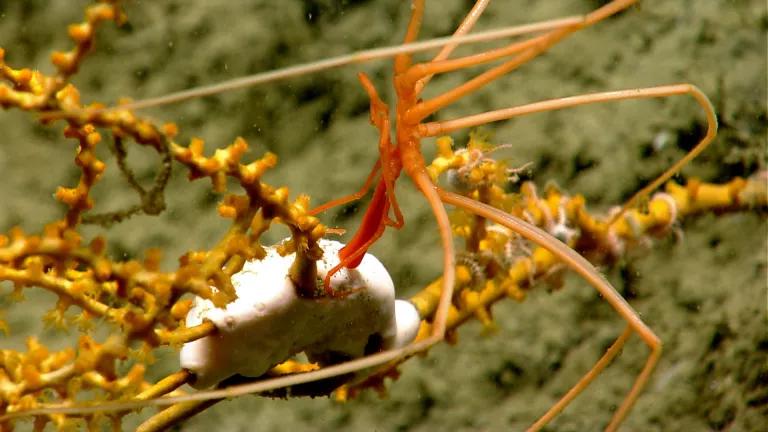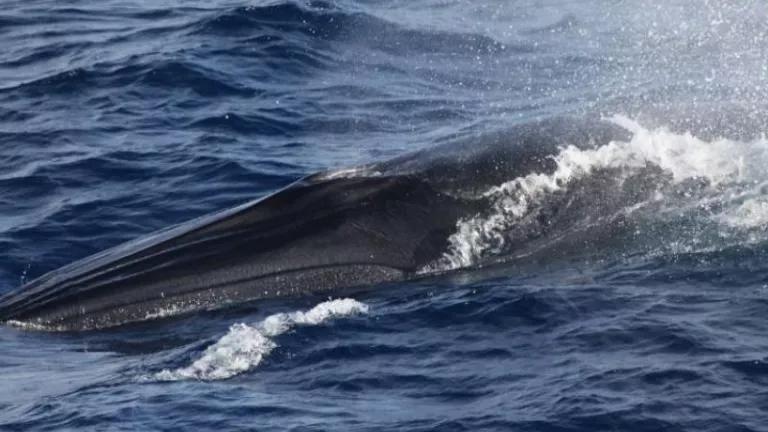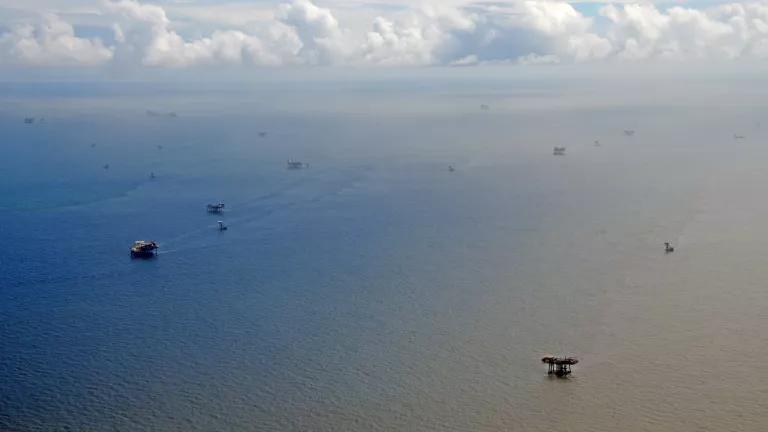
Tomorrow evening, a crowd of hundreds will have a chance to learn about two truly spectacular Atlantic Ocean treasures off the coast of New England from a panel of scientists at an event hosted by National Geographic at Boston's New England Aquarium.
Coral "forest" in Heezen Canyon. Photo credit: NOAA Okeanos Explorer Program, 2014 Northeast U.S. Canyons Expedition.
The New England Coral Canyons and Seamounts is an area that starts around 150 miles southeast of Cape Cod and includes five dramatic underwater canyons, some deeper than the Grand Canyon, along with four underwater mountains--or "seamounts"--that rise as high as 7,000 feet above the ocean floor--higher than any mountain east of the Rockies. The canyon walls and seamount slopes are alive with vivid cold-water corals of otherworldly beauty--some the size of small trees that have grown over centuries. The waters above teem with diverse marine life, with a concentration of plankton, squid and other forage organisms providing a banquet for marine mammals, including the iconic sperm whale, seabirds, sea turtles and an array of fish.

Sea spider in Lydonia Canyon. Photo credit: NOAA Okeanos Explorer Program, 2014 Northeast U.S. Canyons Expedition.
NRDC has been working to protect the Atlantic Canyons and Seamounts for over a decade because of their ecological significance and vulnerability to human disturbance.

Cashes Ledge in the Gulf of Maine, about 80 miles southeast of Portland, Maine, is a unique underwater mountain range with a virtual treasure trove of marine life living among its peaks and valleys. This includes the deepest and largest cold-water kelp forest on the Atlantic seaboard. This lush kelp provides superb habitat and serves as a food source for the vast array of ocean wildlife. After an underwater expedition to Cashes Ledge 3 weeks ago, renowned oceanographer and National Geographic Explorer-in-Residence Sylvia Earle called Cashes the "Yellowstone of the North Atlantic" and an "underwater extension of the mountains of Acadia National Park."
Anemone on Cashes Ledge. Photo credit: Brian Skerry/CLF.
These unique biodiversity hot spots need permanent federal protection. They provide a vital refuge for hundreds of species of rare and unique marine wildlife, including whales, sea turtles, dolphins and seabirds. These areas are critical to the health of our ocean fish, which are the lifeblood of Atlantic coastal communities. Yet they are also highly vulnerable to long-term harm from commercial fishing, oil and gas exploration, mineral extraction and climate change.

Atlantic cod on Cashes Ledge. Photo credit: Brian Skerry/CLF.
A year ago, President Obama signed a proclamation dramatically expanding an existing Marine National Monument in the Pacific Ocean. That created the world's largest network of marine reserves, putting a wide swath of tropical atolls and islands completely off limits to commercial fishing and other resource extraction.
The President has the authority under the Antiquities Act to set aside these New England waters for protection. That's the same law presidents have used for more than a century to protect historic lands and landmarks such as the Grand Canyon.
Designating New England's offshore treasures would bring critical protection to these areas, as it would mean a prohibition on all commercial extractive uses: a ban on commercial fishing, oil and gas drilling, deep sea bed mining, and sand and gravel mining.




